Conference Program
Perspectives on the deployment of MASS
09:00 - 12:25
Moderator
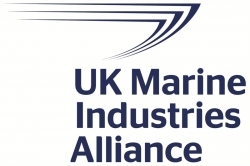 James Fanshawe CBE FNI
James Fanshawe CBE FNIChairman
UK MAS Regulatory Working Group
UK
09:00
Market insights into autonomous maritime systems: an industry survey
 Hans-Christoph Burmeister
Hans-Christoph BurmeisterHead of department
Fraunhofer CML
Germany
Based on an industrial survey among executives or senior managers of 52 companies, the following insights into the currently evolving market of autonomous maritime systems (AMS) are given: the current status of the AMS market; the active players and driving subsegments in the AMS domain; how European industrial players perceive the market. Most responses come from shipping, supplier and port segments covering active and passive companies with regard to AMS. The results are a synopsis of a recent market study commissioned by the German Maritime Centre.
09:25
Pro-innovation approaches for testing and assuring MASS
 Andre Burgess
Andre BurgessAssured autonomy program lead
National Physical Laboratory
UK
With an international non-mandatory goal-based MASS code due in 2025, the relevant technical enablers must be in place to deliver the adoption of MASS at the scale where the full benefits can be derived. The UK Maritime Autonomy Assurance Testbed (MAAT) program follows a data-driven and evidence-based approach to help develop the technical capabilities and pro-innovation standards to enable the deployment of maritime autonomous technologies globally. This talk will share the latest research activities being conducted with international partners, including data standards and metrics for situational awareness, and a common test scenario definition language and taxonomy/definition for operating conditions and system behaviors.
09:50
MASS and the emergence of maritime intelligent transportation systems
General manager
Norwegian Forum for Autonomous Ships
Norway
Intelligent transportation systems (ITS) are most used in relation to road traffic. ITS include concepts like traffic monitoring and control, connected, cooperative and automated mobility (CCAM), and advanced automated and autonomous cars. Many of these concepts are already available in ships, and autonomous shipping is rapidly developing into real business models. This presentation will go through the different ITS concepts and show how the maritime sector is in many ways ahead of the road sector. It will also discuss why we need a stronger integration between road and maritime ITS and how this can be achieved.
10:15
Highly automated and remote-controlled vessels from an integrator's perspective
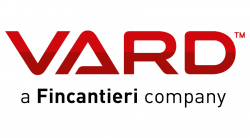 Hendrik Busshoff
Hendrik BusshoffProduct manager remote ship operations
Vard Electro
Norway
Highly automated and remote-controlled vessels have been making news in academia and research, but almost unnoticed made it into commercial application. This resonates in every single aspect of building a ship, from design to delivery. Remote control constitutes a step-change in complexity over mere remote monitoring as it puts up a new set of requirements regarding availability, resilience, safety and security for virtually every system on board. This redefines shipbuilders towards a active role taking ownership of the technological, regulatory and commercial roadmap alongside its customer. This presentation will share insights from projects on how this could work.
11:10
Embracing and navigating the challenges and opportunities in Shipping 4.0
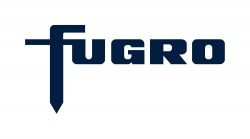 Ivar de Josselin de Jong
Ivar de Josselin de JongDirector strategy and commercial
Fugro
Netherlands
The speech will focus on the challenges and opportunities the shipping and maritime industry is facing in embracing the complexities around further maturation of the maritime remote and autonomous ecosystem in the middle of the fourth industrial revolution. Challenges like safety, capability, reliability, compliance and risk control are discussed against opportunities in digitalization, AI and machine learning but also in future workforce diversity and the welfare/work-life balance of maritime personnel. By exploring these challenges and opportunities, the speech aims to provide insights into how the maritime industry can successfully navigate the complexities of implementing autonomous shipping.
11:35
Roadmap toward unmanned surface vehicle (USV) deployment in Malaysia
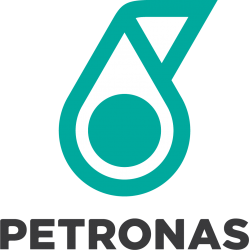 Farawahida M Monil
Farawahida M MonilPrincipal, geohazards
Petronas
Malaysia
This presentation will explore an unmanned surface vehicle (USV) deployment in Malaysia, specifically for geophysical survey operations and led by Geomatics specialists. The Geomatics team delved into USV technology to enhance traditional survey vessel operations. This session will highlight achievements to date and outline the trajectory for USV advancements in Malaysia.
12:00
MEGURI2040 Stage 2: toward the social implementation of fully autonomous ships
 Masanori Muto
Masanori MutoGroup leader/senior researcher
Mitsubishi Research Institute
Japan
The MEGURI2040 Fully Autonomous Ship Project administrated by the Nippon Foundation has moved to the second stage, targeting the commercialization of fully autonomous ships by 2025. Under MEGURI2040 Stage 2, the consortium of over 50 companies (DFFAS+) in Japan will demonstrate the fully autonomous navigation system equivalent to AL4 but also work on other activities necessary for social implementation, including standardization of technologies and ensuring social (and economic) acceptance of MASS. The presentation shows the progress of the project, especially focusing on how the consortium works on use cases, insurance and legal liability issues, and the socioeconomic impact assessment of MASS.
Project reviews and case studies
14:00 - 17:00
Moderator
 James Fanshawe CBE FNI
James Fanshawe CBE FNIChairman
UK MAS Regulatory Working Group
UK
14:00
The operational landscape: a status report from the frontlines
 Tom Eystø
Tom EystøCEO
Massterly
Norway
Massterly has played an important role in autonomous ship operations since its establishment in 2018. As a joint venture between Wilhelmsen and Kongsberg Maritime, Massterly combines ship management and control room operations using advanced technology to manage the complete value chain for autonomous vessels. This approach involves being part of the design, development and operational services, which ensures safety, efficiency and reliability in maritime logistics, subsea surveys and ROV operations. In this presentation, we will provide an operational status report on Yara Birkeland, Asko and Reach Subsea.
14:25
Technology development for autonomous and remotely operated ships
 Jong Jin Park
Jong Jin ParkPrincipal research engineer
Samsung Heavy Industries
Korea
This presentation will review the research of remotely operated and autonomous ship technologies being developed to reduce crew workloads. These solutions, such as CBM, E-Logbook and automatic report, have been developed and installed as one of the specifications for the ships Samsung Heavy Industries (SHI) has ordered and SHI has been developing a remote real-time monitoring and control system with connection between IAS/ICMS and the remote-control system. After intensive validation with simulation-based tests, this system has been verified and tested on actual container ships.
14:50
Optimal speed as a basis for fuel-efficient autonomy
 Ramon Sieber
Ramon SieberResearch and development engineer
Shiptec
Switzerland
Autonomy in shipping not only leads to more safety but can also save fuel. In timetable operation, the sailing speed is the significant factor in the ship's fuel consumption. Arriving just in time requires the consideration of multiple factors and is currently dependent on the experience of the captain. This presentation reviews a tool which calculates the optimal speed profile by relying on a multi-criteria algorithm and AI. The calculated optimal speed is applied to a smart-throttle lever to autonomously control the speed of the ship. In beta testing on multiple ships in the field, a fuel reduction of 13% was achieved.
15:45
Allowing unmanned ships in inland waters
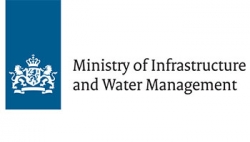 Patrick Potgraven
Patrick PotgravenProgram manager smart shipping
Ministry of Infrastructure and Water Management
Netherlands
Traditional laws were drafted in an era when unmanned sailing was not foreseen. To make unmanned sailing on inland waters legally possible, these laws must be adapted. In this process, the goal of making unmanned sailing as safe as sailing with a crew on board is the starting point. But when do we consider that a ship is operating safely enough to allow it to sail uncrewed? The Dutch Ministry has set up a rule-based judgment framework for the exemption process.
16:10
Autonomous ships on rivers and in harbors in Taiwan
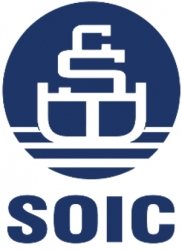 Chia-Jung (Tina) Hsu
Chia-Jung (Tina) HsuProject manager
Ship and Ocean Industries R&D Center (SOIC)
Taiwan
Taiwan has announced the Unmanned Vehicles Technology Innovative Experimentation Act in December 2018, the first of its kind in the world covering autonomous vehicles on land, at sea, and in the air. As a ship and maritime technology R&D institution, SOIC has been developing fully-electric autonomous Sightseeing Ships and a marine debris cleaning boat. The remote-control station is included. The Sightseeing Ships has carried thousands of passengers and auto-sailed hundreds of kilometers. The cleaning boat has passed the fields test phase and are participating in the harbor cleaning missions.
16:35
COLREGs-compliant autonomous navigation – sea trials in the MARSUR project
 Walter Driesen
Walter DriesenDevelopment manager
dotOcean
Belgium
This presentation reviews solutions for autonomous navigation and captain assistance which involve automated support for situational awareness (AIS, radar, lidar, camera), autonomous navigation, autonomous collision avoidance according to COLREG rules and autonomous docking. The review demonstrates how this technology has been tested in virtual environments, harbor trials and sea trials with the MARSUR project.
Legal, liability and regulatory issues
09:00 - 12:30
Moderator
 James Fanshawe CBE FNI
James Fanshawe CBE FNIChairman
UK MAS Regulatory Working Group
UK
09:00
A technical-regulatory perspective on the realization of autonomous waterborne logistics
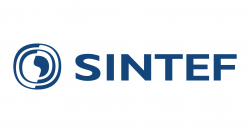 Espen J Tangstad
Espen J TangstadResearcher, energy and transportation
SINTEF Ocean
Norway
This talk will look into the technical-regulatory aspects that affect the realization of autonomous shipping, with examples of future-oriented concepts where autonomous ships are used in logistics systems.
09:25
The MASS assurance and regulatory compliance process
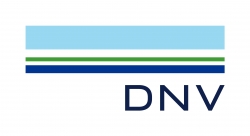 Jan van Tiggelen
Jan van TiggelenDiscipline leader digital transformation
DNV
Norway
The presentation will share DNV Advisory's practical experience from MASS projects with a focus on the assurance and regulatory compliance process. Main topics for the presentation: flag state requirements; IMO MSC 1/Circ 1455 requirements; class requirements (DNV CG-0264); the need for third-party verification of concept qualification (CQ) and technology qualification (TQ) of novel technology; the MASS risk assessment requirements; cybersecurity and safety management system requirements; lessons learned from MASS projects.
09:50
Preparation for port state control inspection of MASS
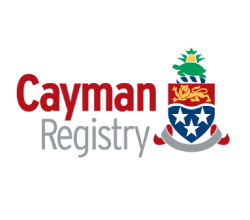 Chris Balls
Chris BallsPrincipal surveyor
Maritime Authority of the Cayman Islands
Cayman Islands
This paper will outline some of the discussions that have taken place at the Caribbean Memorandum of Understanding on Port State Control (CMoU) Technical Standards Working Group concerning port state inspection of autonomous vessels, in particular the sub-24m type. It will include details about the development of guidance for PSC officers, such as a draft aide-mémoire. The paper will also outline CMoU preparations for PSC activities for visiting autonomous vessels; depending upon the timing of the first such inspection in the Cayman Islands, it may include a description of this and the lessons learned.
10:15
AI and its impact on business
 Eugene Goryunov
Eugene GoryunovPartner
Haynes Boone LLP
USA
The presentation will discuss the ways that AI can improve and even change the transportation and shipping industries. There are many forms of AI and several have been used for years. For example, automated logistics, delivery routing and route navigation are all powered by AI, whether it be predictive analytics, different calculations or brute-force calculations. This session will explore these models and preview up-and-coming technologies that companies should consider in order to be competitive.
10:40
The evolving approach to maritime autonomy in the United States: Recent U.S. congressional developments, use cases and investment, and the State of U.S. Coast Guard Policy
 Sean Pribyl
Sean PribylPartner
Holland & Knight LLP
USA
The U.S. autonomous vessel market continued to develop over the past year. Recent U.S. Congressional interest in emerging maritime technologies supports a view of cautious optimism in the coming year, which may work to allow for increased investment by the commercial market to follow precedent being set by the U.S. government, commercial outer space sector, and offshore energy industry. Investment in the U.S. market continues to take shape as U.S. policy and Congressional authorizations are offering a glimpse of pathways to overcoming limitations under U.S. law related to minimum vessel manning requirements and compliance with navigation laws such as the COLREGs. Testing by academic institutions is also supporting collaboration and safe development of use cases, and government agencies are undertaking directed research into the future of commercial maritime autonomy with reports expected this year. Moreover, labor shortages and emerging opportunities for new decarbonization technologies may present useful justifications, including with remotely controlled operations. The U.S. Coast Guard remains the primary gateway through which industry seeks permission to operate without crew (or reduced crew) and with advance autonomous functionality, and this session will examine the state of Coast Guard law and policy, and what industry can expect in the coming year.
11:30 - 12:30
Panel Discussion
 Jan van Tiggelen
Jan van TiggelenDiscipline leader digital transformation
DNV
Norway
 Chris Balls
Chris BallsPrincipal surveyor
Maritime Authority of the Cayman Islands
Cayman Islands
 Eugene Goryunov
Eugene GoryunovPartner
Haynes Boone LLP
USA
 Sean Pribyl
Sean PribylPartner
Holland & Knight LLP
USA
Data connectivity and cybersecurity
13:45 - 17:00
Moderator
 James Fanshawe CBE FNI
James Fanshawe CBE FNIChairman
UK MAS Regulatory Working Group
UK
13:45
Ship-shore connectivity and remote diagnostics: new BV rule notes
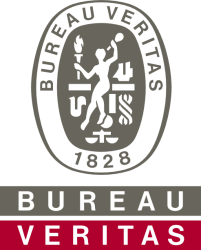 Ilia Maslov
Ilia MaslovTechnical advisor - digital and smart ships
Bureau Veritas Marine & Offshore
France
Connectivity systems on board and remote diagnostics from shore are among the enablers of autonomous and remotely operated shipping. BV M&O will share updates about the new rule notes and corresponding notations SYNC-COM and DATA-CENTRIC published in 2024. Challenges and regulatory solutions will be presented, including results from the S-123 development project with the International Hydrographic Organization (IHO) and from the data-centric evaluation project.
14:10
Error handling at the core: safe autonomy.
 Sylvain Joyeux
Sylvain JoyeuxCTO
TideWise
Brazil
Systems fail. Is combining mechatronics and software a recipe for disaster? This presentation will look at efforts to avoid failures altogether but we recognize that they are unavoidable. This talk will present the defense-in-depth approach used in software to detect and handle failures, guaranteeing the safe operations of our USVs.
14:35
Advancing autonomous navigation: an AI framework to learn good seamanship
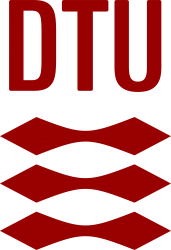 Roberto Galeazzi
Roberto GaleazziHead of center
Technical University of Denmark
Denmark
In the past decade, we have seen a burgeoning of COLREGs-compliant collision avoidance systems, born from a diverse array of algorithmic innovations. Yet their effectiveness is curtailed, limited to scenarios where specific COLREG rules can be distinctly applied. Contrarily, human navigators, in their quest for unerring safety, often transcend these rules, invoking the art of good seamanship in situations of imminent peril. We propose an AI framework adept at assimilating good seamanship, drawing from the rich, yet underutilized, knowledge reservoirs embedded in maritime academy simulators. This novel approach promises to usher in a new era of autonomous navigation.
15:30
COLREG’s compliant marine autonomy software – where are we for real today? And how does it work?
 Matthew Ratsey
Matthew RatseyManaging director
MarineAI
UK
It has been two years since MarineAI's Matthew Ratsey stood on the podium and talked about the successful autonomous transatlantic crossing of Mayflower. In essence, Mayflower was MarineAi's tech demonstrator, showcasing the art of the possible. Two years on, MarineAI has made very significant strides in the development of its GuardianAI software stack and today takes a look at how the sensor integration and data fusion in the software stack development has allowed it to offer market-leading COLREG-compliant software.
15:55
Zero-shot learning for enhanced maritime navigation: a semantic reinforcement approach
 Robert Emmitt
Robert EmmittAutonomy and data science engineer II
PacMar Technologies
USA
This effort focuses on enhancing deep learning networks by adapting semantic relations and concepts in a knowledge graph to ground emerging categories from perception. The goal is to advance a maritime platform’s capabilities when encountering novelty and enable adaptive behavior in unstructured environments by providing it with a perception-knowledge-based toolset for improved navigational performance. The approach involves knowledge adaptation via reinforcement learning to improve the classification of previously unseen objects using both naval-specific initial knowledge and monocular vision. This is achieved by integrating conventional methods with commonsense knowledge bases. Results demonstrate improvements in traditional classification and novel object detection.
16:20
Environmental data for marine autonomous systems: the meteorological and oceanographic perspective
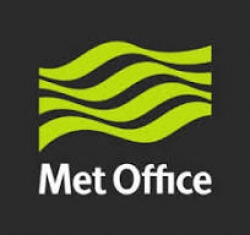 Dr Edward Steele
Dr Edward SteeleScience manager - marine applications
Met Office
UK
From design and certification to deployment and operations, meteorological and oceanographic ('metocean') information is essential to the safe and successful operation of MASS. This presentation will explore the different types of metocean data information relevant to different stages of this lifecycle, with a particular focus on areas of emerging and early-stage requirements compared with traditional vessels.
Positioning and situation awareness
09:00 - 12:00
Moderator
 James Fanshawe CBE FNI
James Fanshawe CBE FNIChairman
UK MAS Regulatory Working Group
UK
09:00
Autonomous launch and recovery with a USV platform - An overview of the sensing subsystem
 Howard Tripp
Howard TrippPrincipal product manager at ASV UK
L3Harris
UK
This presentation will review a sensing subsystem for autonomous launch and recovery of a USV platform. The project used a bespoke cradle and was designed to operate in a degraded communication environments, such as alongside a ship. The project utilised a range of sensor inputs to enable the vessel to position itself both with and without GNSS. The LAR system combines computer vision and LIDAR sensors to track the recovering cradle, and autonomously manoeuvre the USV inside. The system was designed for both redundancy and a wide environmental & sea-state operational window. At sea, launch and recovery was successfully demonstrated and the system is ready for further experimentation under more challenging weather conditions.
09:25
Navigation using the Quasi-Zenith Satellite System (QZSS), high-definition maps and positioning
 Koki Asari, PhD
Koki Asari, PhDGeneral manager
Japan Space Systems, General Incorporated Foundation
Japan
The QZSS is a Japanese constellation of the Global Navigation Satellite System (GNSS). A proposal for IEC 61108-8 on QZSS navigation receivers has been made. This is an international standard created in accordance with IMO resolutions. QZSS is scheduled to expand to a seven-satellite system within two years. QZSS is equipped with the Centimeter-Level Augmentation Service (CLAS), which is useful for creating high-definition maps for precise autonomous ship operations including automatic docking. Japan is developing a new concept that considers very accurate geodetic positioning for precise maritime navigation.
09:50
Space in support to autonomous shipping
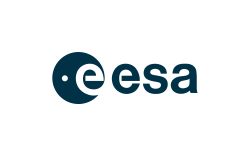 Nil Angli
Nil AngliBusiness applications and partnerships officer
European Space Agency
UK
Autonomous ships are inextricably linked to space: in open sea, communication between vessels and digital bridges relies on satellite connectivity; high-accuracy positioning relies on global navigation satellite systems (GNSS); and near real-time situational awareness information, such as weather and sea ice conditions, relies on Earth observation satellites. The European Space Agency (ESA) is committed to supporting the maritime industry to innovate by leveraging space data. This session will showcase past and ongoing autonomous shipping projects and will present future opportunities to collaborate with ESA.
10:15
W-band ultra high-resolution radar: The right technology for marine autonomy
 Rachael O'Connor
Rachael O'ConnorMarine business development manager
Navtech Radar
UK
This presenation will share the latest examples of data from real-world trials onboard autonomous vessels which utilise Navtech’s millimetre wave FMCW 76-77GHz radar technology. High resolution radars are providing superior detection capability for small targets, giving vessels unparalleled situational awareness in all weather and lighting conditions. This unlocks the ability for vessels to safely navigate congested waterways autonomously. A sensor comparison will be discussed, presenting the extended range, reliability, and high-resolution imaging that FMCW radar technology can offer when compared to both lidar and cameras.
11:10
Developing a COLREGS-compliant autonomous navigation system
 Nigel Lee
Nigel LeeChief strategy officer
Robosys Automation
UK
This presentation will review a +20-year journey to develop a maritime autonomous navigation system (ANS) for USVs. From an obstacle avoidance algorithm first developed for the NASA Mars Rover to real-life and simulated autonomous navigation and collision avoidance trials, it has proved its COLREGs compliance from Canada to Australia. With Indian Register of Shipping class society certification for its Voyager AI software on board an uncrewed 30m tug. Robosys is now working with integrated bridge system (IBS) manufacturers to develop a bridge-based collision avoidance decision aid (CADA) for lean crewed ships to improve safety in complex navigational waters.
11:35
Designing for and assuring situational awareness for remote operation
 Matthew Smith
Matthew SmithSenior navigation and seamanship engineer
BMT
UK
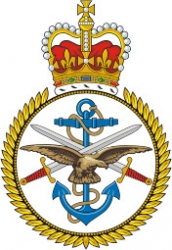 Stephen Perry
Stephen PerryNATG MASS lead
Naval Authority Technical Group (NATG)
UK
Remote operation of surface vessels is growing rapidly with more vessels being controlled remotely than ever before. Ensuring satisfactory navigational and Bridge situational awareness to make well informed decisions during a mission is a core part of safe remote operation. BMT and the Naval Authority Technical Group (NATG) have developed a tool to design for, and assure, the situational awareness of remote operation. Taking an approach of equivalence, this tool brings together the applicable type approvals and standards for remote operation centres to meet, in order to be well designed and assured for certification.
Training and human factors
12:50 - 15:00
Moderator
 James Fanshawe CBE FNI
James Fanshawe CBE FNIChairman
UK MAS Regulatory Working Group
UK
12:50
No dropouts, please – creating a future where human ingenuity meets cutting-edge technology
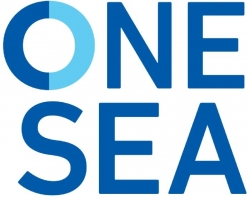 Sinikka Hartonen
Sinikka HartonenSecretary general
One Sea Association
Finland
The rapid advancement in technology enables us to increase the usage of automation and autonomous functions in maritime operations. However, the idea that these developments will make seafarers redundant is misplaced. Instead of embracing this notion, we should focus on how we can harness the strengths of technology to enhance human capabilities and eliminate human weaknesses. This presentation highlights the importance of creating a future that allows seafarers and other maritime professionals to maintain their expertise and professional pride empowered by technology, not replaced by it.
13:15
Design and optimization of remote operating centers
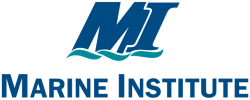 John Cross
John CrossFaculty
Marine Institute of Memorial University
Canada
In 2023 the Marine Institute completed The Launch facility in Holyrood Bay on Canada’s east coast and the home of the Marine Autonomous Systems Testbed (MAST) initiative. One of the projects housed under MAST is our research investigating the development and design of remote operating centers (ROCs). ROCs are going to play a key role in the future of autonomous ships but surprisingly little research has gone into their design, operating configurations and user needs. This presentation will discuss the development plan of our ROCs, functionalities and pathways forward.
13:40
Navigational training for maritime autonomous surface ships using bridge simulator
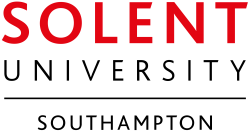 Zakirul Bhuiyan
Zakirul BhuiyanDirector
Warsash MASS Research Centre
UK
The fast advancement of technology over the last decade has had an impact on all industries, including maritime. Maritime autonomous surface ships (MASS), which were once only a concept, are now becoming a reality. Several countries have made successful attempts to run MASS in coastal waters. The nations are competing to be the world leader in the field of maritime autonomy. However, in the midst of all this rivalry, little attention has been paid to the future navigational training difficulties. The crucial question is how this new disruptive technology will affect maritime education and training (MET).
14:05
Introducing autonomous ships requires a holistic approach.
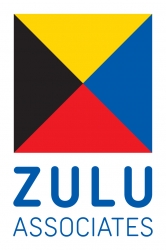 Antoon van Coillie
Antoon van CoillieDirector
Zulu Associates/Anglo Belgian Shipping Company
Belgium
Autonomous or remote operations of vessels need a holistic approach in order to benefit from the possibilities offered by this technology: sustainability, shortage of seafarers and their well-being, offering alternative links in logistic chains (modal shift). Not only need the vessels and their operations to be redesigned in a holistic way: i.e. hull, maneuverability, propulsion, communication, procedures, etc., but also, the infrastructure for handling the vessels, energy loading, energy availability will need to be redesigned and reconfigured, changing also the concepts of operation. Lastly, humans intervening with these vessels and the related infrastructure will need new training and a change of mind.
14:30
Advancing USV operations: Best practices in workforce training and competency development
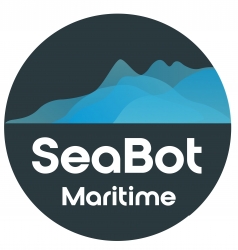 Gordon Meadow
Gordon MeadowCEO (& co-founder and chair MASS people)
SeaBot Maritime
UK
The role of workforce vocational training and structured training programs in enhancing operational confidence and innovation in USV deployment. Effective training methods to leverage new operational strategies in Unmanned Surface Vehicles (USVs) and their applications. Essential Competencies for USV Operators addressed during training. Exchange of best practices in combined USV and remote ROV operations
